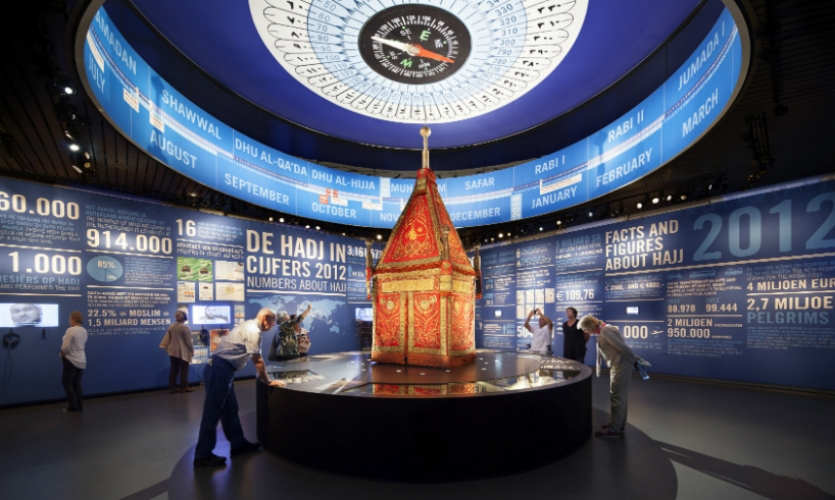Graphic Designers Creating Posters With Environmental Data
Environmental Graphic Design (EGD) embraces many design disciplines including graphic, architectural, interior, landscape, and industrial design, all concerned with the visual aspects of wayfinding, communicating identity and information, and shaping the idea of creating experiences that connect people to place.
In a historic context providing signs in the environment is as old as art itself with cave men telling stories through paintings on the walls of their caves. However in the modern context the profession is only about 40 years old when a group of designers recognized that what they did was a lot more than make signs and got together to form SEGD to develop their activities into a profession.
In 2013 the Board of Directors of SEGD voted to change the name of the SEGD association from Society for Environmental Graphic Design to more accurately reflect the expanding nature of communication in the built environment to Society for Experiential Graphic Design. Experiential more accurately describes the work that our members have been doing already for the past 15-20 years which involves more than just the core signage and wayfinding disciplines. It encompasses the broader notion of all communication in the build environment which included content, moving digital text and images, display content such as museum exhibits, branded content such as football stadiums and corporate headquarters. Secondly, when the term Environmental Graphic Design was coined by our association founders in the early 70's, Environmental did not have the strong association with the environmental movement that it has today.
Wayfinding forms the core of what experiential graphic design can do to improve peoples experience of place. Ask any hospital administrator how visitors perceive the experience of their facility and they will most likely tell you that if the visitor cannot find their way around, nothing else matters. Wayfinding forms the very core of a visitors experience of a place.
There are a number of practice areas that fall under the umbrella term of Experiential Graphic Design or Environmental Graphic Design (EGD) such as wayfinding, placemaking, exhibition design, public spaces, research and master planning.
Wayfinding systems

Schipol Airport Wayfinding System by Paul Mijksenaar. Image (C) Urban Capture
Placemaking and Identity
See also architectural graphics and signage

Exhibition design
See also Identity graphics,sometimes referred to as interpretive graphics

Longing for Mecca Exhibit at the Museum of Ethnology in Leiden by Kossmann.dejong
Public Installations

See also civic design,pictogram design,retail and store design,mapping,

City Creek, Salt Lake City by Selbert Perkins Design Collaborative
Branded environments and themed environments

Increasingly Environmental Graphic Design involves dynamic digital technologyelements arranged into systems which introduce the concepts of changing content,motionand interactionbetween a user in a place and information as opposed to the simple one way communication of information from static element to the user as occurred in the traditional notion of static Environmental Graphic Design.

Over the past few decades, Environmental Graphics Design has rapidly progressed from signage and wayfinding to placemakingand is on the way to becoming the digital interface of the public facing part of the smart cities concept.More examples of EGD projects can be seen on the Design Awardspages.
There are many article on SEGD.org that explore the emerging development of intelligent environments that are powered by the use of data, digital screens, interfaces, tracking and user recognition and communication technologies. Annually these topics form the subject of the XLabevent usually held in New York in November. The goal of this event is to explore the cutting edge of how digital technologies are being used to create experiences that connect people to place.
If you are interested in Experiential Graphic Design as a career you may also enjoy reading the SEGD article 40 Greatest moments in Environmental Graphic Designfor a quick historical trip through the professions development.
Or learn the core competences required to practice as an Environmental Graphic Designeror Experiential Graphic Designer.
To learn more about Environmental/experiential Graphic Design visit our Xploresection.
Sign upfor SEGD's weekly News e-mail. This highlights the latest article to be published on SEGD.org every week.
Join the EGD/XGD communityof designers.
As an SEGD member you will receive more benefits than ever before. SEGD members have access to learning resources, promotional tools, free videos, webinars, and so much more! But most importantly you'll be connected with your design community. SEGD offers Studio, Professional, Associate and Student memberships to best serve your specific needs. Become a member today!
Members will get:
- Free access to over 140 educational videos from the SEGD events over the past 2 years
- Free registration to all the SEGD Webinars
- A copy of SEGD16 our annual of design excellence and much more.

Graphic Designers Creating Posters With Environmental Data
Source: https://segd.org/article/what-environmental-graphic-design-egd
0 Response to "Graphic Designers Creating Posters With Environmental Data"
Post a Comment